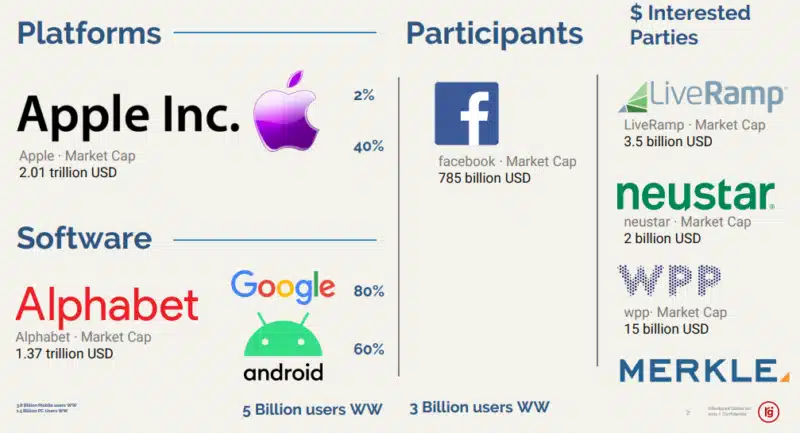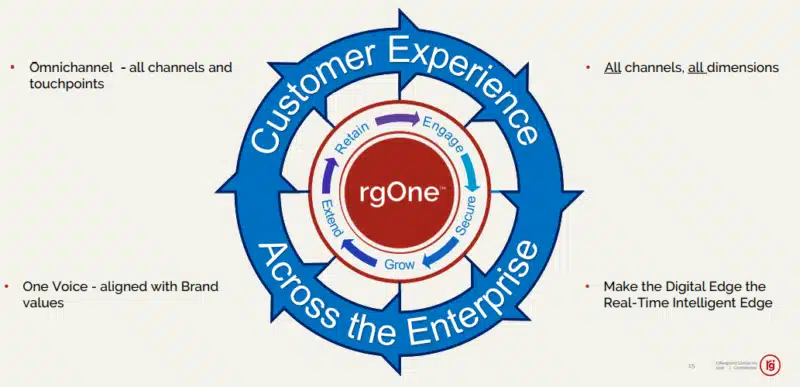How marketers can create a CX that respects consumer privacy
Successful CX strategies rely on privacy compliance and well-orchestrated marketing tools.
“The mobile phone is quickly becoming the source of our identity,” said George Corugedo, CTO of customer data platform Redpoint Global, in his session at our MarTech presentation. “In a few years, your driver’s license, your passport — all these documents of identity — are going to be digitized to be displayed when necessary.”
With so much personal data going digital, consumers are now aware of gaps in their online privacy. Large organizations have long captured this information to improve their marketing efforts. But the issues arising from private data use have forced many brands to develop new strategies centered on consent.
“The bottom line is that the exchange of value for data is going to be fundamentally different,” he said.

Adhere to consumer privacy legislation
“The California Privacy Rights Act is legislation that is going to come into effect in 2023 — it further changes the way data is acquired by companies who want it,” Corugedo said. “Today companies can just buy your data. But in the future, only you can make a determination about who gets your data.”
He added, “That’s a sensible thing when you think about it. It is your data you should be able to control it and give it to whoever you want in exchange for something.”
The advent of digital privacy laws emphasis the need for brands to adopt customer-centric strategies. Qualified consent — the process in which brands must ask customers for their data — is here to stay.
Here are some ways Corugedo recommends marketers improve customer experience in the wake of these consumer privacy changes.
Use a data management tool
Without the ability to both organize customer data and gain actionable insights, marketers will have a hard time improving CX.
“It’s all about data management — managing the customer’s data,” said Corugedo. “That means every channel every contact point needs to be brought into the CDP.”
He added, “That means you’ve got to unify, harmonize, and get all your data records in the same format.”
Whether you use a CDP depends upon your brand’s goals and strategy, one thing is clear: Data management tools are vital to good CX.
Looking to take control of your data? Learn about trends and capabilities of customer data platforms in the latest edition of this MarTech Intelligence Report.

Combine identity resolution technology
If you’re using a CDP or another management platform, you want to be sure no data is wasted. But many of these platforms fail to give marketers a complete view of their customers, focusing primarily on data collection. Identity resolution can fill this gap.
“Customer data platforms or other systems make sure that the first-party data that you use for the identity resolution is clean,” said Hugo Loriot of fifty-five in a separate MarTech session. “So you collect information about your users’ website behavior, point of sales behavior, loyalty information — a customer data platform will make sure that all that is properly maintained.”
It’s important to note that many vendors that claim to offer identity resolution (IR) with data management capabilities fail to follow these new privacy laws. That’s why marketers should choose a compliant IR solution that can help marketers build audience trust.
“You’ve got to pay close attention to those IR partnerships,” said Corugedo. “They have a big impact on whether you’re adhering to privacy.”
Build an omnichannel stack
“If you want to get the best customer experience, you have to be omnichannel across the entire enterprise,” Corugedo said.
Successful brands use these data management and IR technologies to power omnichannel experiences. These organizations provide consumers with high-quality CX because they respect their privacy while offering unique interactions tailored to them.

“You need to focus on getting every dimension of your business on this fundamental enterprise messaging platform,” he said. “And then you make sure you’ve got one brain with which you’re communicating across all the channels.”
He added, “You have to have cross-channel awareness to give customers the very best experience possible. They’re going to have a single customer experience across the enterprise.”
Watch the full presentation from our MarTech conference here (free registration required).
Identity resolution platforms: A snapshot
What it is. Identity resolution is the science of connecting the growing volume of consumer identifiers to one individual as he or she interacts across channels and devices.
What the tools do. Identity resolution technology connects those identifiers to one individual. It draws this valuable data from the various channels and devices customers interact with, such as connected speakers, home management solutions, smart TVs, and wearable devices. It’s an important tool as the number of devices connected to IP networks is expected to climb to more than three times the global population by 2023, according to the Cisco Annual Internet Report.
Why it’s hot now. More people expect relevant brand experiences across each stage of their buying journeys. One-size-fits-all marketing doesn’t work; buyers know what information sellers should have and how they should use it. Also, inaccurate targeting wastes campaign spending and fails to generate results.
This is why investment in identity resolution programs is growing among brand marketers. These technologies also ensure their activities stay in line with privacy regulations.
Why we care. The most successful digital marketing strategies rely on knowing your potential customer. Knowing what they’re interested in, what they’ve purchased before — even what demographic group they belong to — is essential.
Dig deeper: What is identity resolution and how are platforms adapting to privacy changes?
Opinions expressed in this article are those of the guest author and not necessarily MarTech. Staff authors are listed here.
Related stories